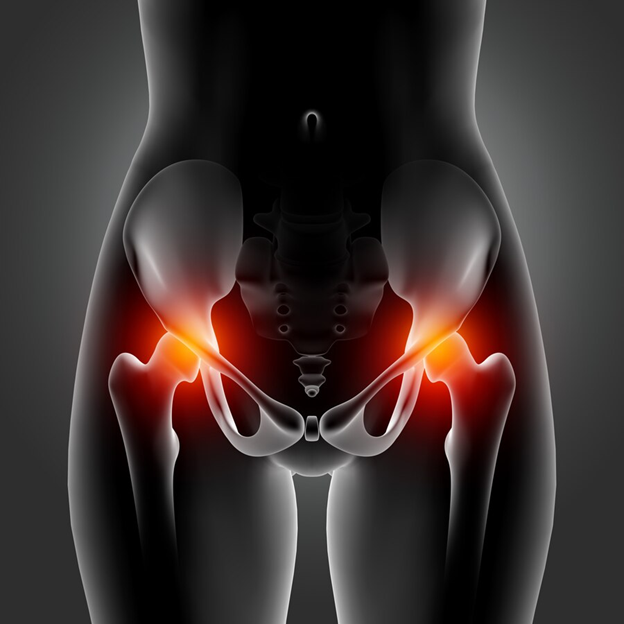Pelvic fractures involve breaks in one or more bones in the pelvis. The pelvis is a ring-like set of bones at the base of your spine. Knowing about pelvic fractures helps prevent injuries and aids in better recovery. Awareness can lead to faster medical attention, crucial in emergencies. Understanding potential risks and symptoms ensures one can handle these injuries properly and avoid further harm.
Anatomy and Functionality of the Pelvis
The pelvis, located at the lower part of the torso, comprises several bones like the ilium, ischium, and pubis. These bones create a sturdy, ring-like structure. The pelvis supports the weight of the upper body. It also holds and protects important organs like the bladder. Besides, it stabilizes the body in motion, allowing for smooth movement whether standing or walking.
Common Types of Pelvic Fractures
Types of pelvic fractures vary, affecting treatment paths and recovery times. Here’s how they differ:
- Stable fractures: Involve one break point and the bones stay in place.
- Unstable fractures: Involve two or more break points and the bones shift.
- Open fractures: The skin is broken, exposing the bone. This type needs immediate care to prevent infection.
- Closed fractures: The skin remains intact, making it less prone to immediate infection.
Each type demands specific care, influencing how management of pelvic fractures unfolds. Treatment can range from simple rest to complex surgeries.
Primary Causes of Pelvic Fractures
The causes of pelvic fractures vary by age and activity. High-energy traumas, like car accidents, are common culprits, leading to severe fractures. In older adults, minor falls can cause fractures due to weaker bones, often from osteoporosis. Stress fractures frequently occur among athletes during intense training. Understanding these causes helps in both preventing and addressing pelvic fractures effectively.
Recognizing Signs and Symptoms of Pelvic Fractures
Signs and symptoms of pelvic fractures often include severe pain and trouble moving. Common symptoms also consist of swelling and bruising around the hip or groin area. Sometimes, complications like internal bleeding may arise, which can be dangerous. Quick recognition of these signs can prevent further damage and enhance the recovery process.
Diagnosing Pelvic Fractures
Diagnosing pelvic fractures typically involves a physical exam followed by imaging tests like X-rays or CT scans. An accurate diagnosis is crucial for determining an appropriate treatment plan. Effective management of pelvic fractures relies heavily on a clear understanding of the specific injury and fractures involved.
Management and Treatment of Pelvic Fractures
The management of pelvic fractures might be simple or complex depending on the injury:
- Rest and pain management: Simple measures like lying still and using medication help ease mild pain and discomfort.
- Surgical options: More severe fractures may require surgery, using either external fixations—a procedure with stabilizing frames—or internal fixations, like rods and screws inside the body.
Quick medical intervention is vital to improve outcomes. The right treatment plan not only reduces pain but also speeds up the pelvic fracture recovery time.
The Recovery Journey and Pelvic Fracture Rehabilitation
The recovery journey includes several stages. The pelvic fracture recovery time varies by severity and treatment method. On average, it can take several weeks to months. Pelvic fractures rehabilitation often involves physical therapy for pelvic fractures, focusing on rebuilding strength and mobility. Gradual reintroduction to normal life activities ensures the body heals steadily. Following medical advice closely helps achieve a smooth recovery process.
Practical Recovery Tips for Patients
Adhering to doctor’s instructions is key in pelvic fractures rehabilitation:
- Follow medical advice: Stick to prescribed activities and rest periods.
- Pain management techniques: Use medication as directed and explore physical therapies.
- Nutritional focus: Consume a balanced diet rich in calcium and vitamin D to support bone healing. Exercise, too, plays a role in regaining strength post-injury.
Preventing Pelvic Fractures and Promoting Bone Health
Prevention is pivotal. Here are simple ways to steer clear of fractures and keep bones strong:
- Safety measures: Wear seatbelts and use non-slip mats in bathrooms and kitchens.
- Diet and exercise: Regular weight-bearing exercises and a balanced diet help maintain bone density, crucial for osteoporosis prevention.
- Caution in high-risk activities: Utilize protective gear during sports.
Long-term Outlook and Prognosis
While many fully recover, some might experience lasting effects like lingering pain. Regular follow-up care is essential in observing healing progress. Early and consistent management of pelvic fractures improves the chance of full recovery and minimizes future complications.
Conclusion
Pelvic fractures require careful attention and timely treatment. Understanding the various aspects—from causes to treatment solutions—enhances outcomes. A proactive approach aids recovery, ensuring better health and mobility in the long run. Stay positive and follow medical advice to manage this journey effectively.
Personalized Care with Dr. Ashish BC
Looking for expert care? Dr. Ashish BC provides personalized recovery plans tailored to individual needs. Focused on your wellness, expect attentive care for each step of your recovery journey. With a patient-first approach, Dr. Ashish BC guides you through, ensuring comfort and peace of mind. Contact today to begin your path to recovery with a trusted partner at your side.


